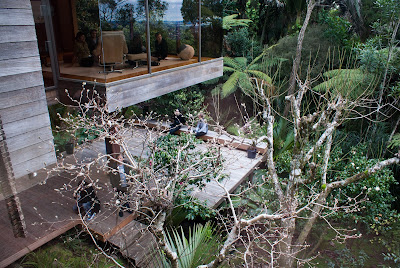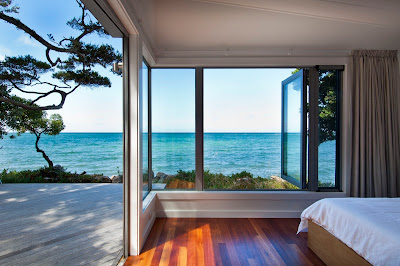What ifs: a future with eco-mobility.
Auckland, New Zealand, may be a small-scale city compared to
others around the world but it has its share of mobility issues. It certainly
isn't ‘eco-mobile’. Give us the slightest drizzle of rain and suddenly traffic
jams up. Our public transport system? A prime target for casual hate
sentiment. On a bad day it even has
its own hashtag on Twitter.
Our lingering problem is that Auckland grew out generally
unplanned. A few centres formed then the rest was haphazard 'fill the gaps' development.
An extensive coast-to-coast tram network was removed in the modernist 1950s in
favour of
cars, cars and more cars. That unfortunate mentality remains today – it is our
symbol of freedom, a part of the Kiwi dream.

But now in the 21st century, we have the
knowledge and, hopefully, the drive to create more sustainable transport options for the future of our cities.
In an attempt to experience the local day-to-day of Melbourne, Australia, I chose
to travel everyday by train in from the suburbs. The transport card reminded me of similar systems I used around London and China – the hallmark of an integrated transport network. Of
course, there are the things to be expected: an occasional late train, thinking "why did I ever resort to public transport?" But all in all,
the robust infrastructure allows you to go anywhere around Melbourne without a
car.

There is always a rivalry between New Zealand and our neighbour Australia. Auckland, like many cities
around the world, is going through some growth pains. Transport infrastructure,
such as the
City Rail Link, aimed at a future Auckland is being introduced, sparking
great debate.
Although we may beat many Australian cities on the
ubiquitous liveability scales, this won’t continue if Auckland grows at its current rate without
further thought and action.
"We know there is still a lot of work to be done. Our transport infrastructure puts us behind other cities on the international indices, and handicaps our people and our economy."
- Mayor Len Brown, Mayor of Auckland
It’s just so hard for people operating in a car-centric city
like Auckland to even imagine what it would be like to be in an eco-mobile city. We don’t know what it is like to live in a cycling city
such as Amsterdam or drive around in an eco-mobile vehicle. We don't know how it feels to be in a city without a desperate
need for cars and smelly diesel buses! Connecting with other cities with
different technologies and new ideas on eco-mobility gives us more insight to improve our city's transport.

The
Eco-mobility World Festival 2013 happening later in the year
calls upon the ‘global village’ to explore these ideas. The Korean city of Suwon takes on a
very practical challenge to prove the merits of eco-mobility. Using
technologies and approaches from across the world, the Haenggung-dong
neighbourhood is going without cars for an entire month during the festival. Is
this an incredible feat? Or will be it effortless? We shall see! This is where some people will get to experience eco-mobility in the flesh. For the rest of us who aren’t at the
festival, this knowledge will be shared over oceans to start changing our
thinking around daily transport; a different philosophy in getting from A to B.
Personally, I can’t wait to see what comes out of it!










































